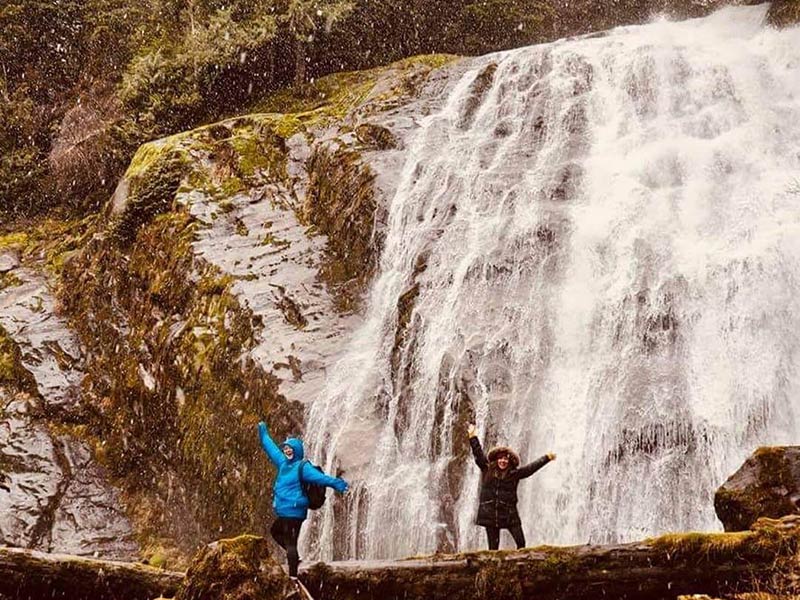
23 Mar When is the best time to see waterfalls?
The short answer is “When it is raining”. However, that is a complex question, with lots of factors affecting it. There are never guarantees. The hydrological cycle is incredibly complex.
Honestly, it is hard to predict issues to the point that you can use the answer to plan your trip. Each day is unique. Again, the short answer might be “During the unstable weather of spring or fall”.
Effects of Rainfall
Obviously, rainfall leads to water flow running off our hills. Timing of that rainfall will affect what you see at ocean level. If rain starts after a stretch of dry weather, the first rainfall will be absorbed into the ground or held in all of the natural reservoirs. Waterfalls will not increase quickly. If conditions are already saturated waterfalls may increase quickly during rainfalls.
There is also a time lag to consider. Hook up a dry hose and turn on the water. Did you notice the time lag while the water filled the hose and worked down its length to the open end? There is something similar in nature. After 3 days of heavy rain we will usually get to the most impressive conditions.
Check the freezing level and cloud cover
It does not matter how hard it rains if upper levels are frozen. Rainfall that falls in solid form (I am avoiding that ugly, four-letter “s” word.) will not run. When it’s frozen up high waterfalls we see at ocean level appear dry.
Conversely, if water (in sold form) at higher elevations melts there will be an increase in flow. Waterfalls at ocean level will grow. In this case it is possible that time of day will also be a factor. On a hot summer day, there is a huge difference between waterfalls in the morning as opposed to late afternoon.
On cloudless days in shoulder seasons, upper levels may freeze at night. This freeze melt cycle slows down runoff and as a result affects the size of waterfalls. If it does not freeze at night the circadian difference will be less.
During bright sunlight solar energy wavelength is long and bounces of off surfaces like white alpine snow pack. On cloudy days the solar energy wavelength is shorter and more easily penetrates the snow pack, accelerating melt. Warm rain carries heat and easily runs through snow pack, promoting melt. All of these factors affect the condition of our waterfalls.
